Glee has fucked up more often than not over the past several years, but it also did a lot of things right (besides produce a lot of really good pop covers). As the series comes to a close this Friday night, we wanted to look back on the times Glee didn’t make us want to remove our eyeballs and donate them to a haunted fruit basket.
1. They Re-Wrote The Script On Bullying
by Riese
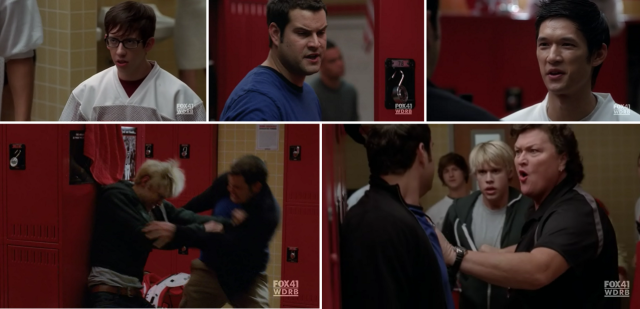
There was always a limit to how much tolerance anybody could be expected to extend to their gay friend or child on television. You might be okay with it, privately, you might personally refrain from beating him up yourself. But stand up for him? NEVER! That would mean all kinds of terrible things, like the possibility that you, too, were gay! We learned to settle for “tolerance,” like that was all we deserved and all we could ask for. But, following several episodes of Kurt getting bullied and nobody doing enough about it, “Furt” demanded more. Kurt visited Dalton and met Blaine and realized that he was allowed to demand more, and one hopes that everybody watching at home knew it, too.
He demanded not just tolerance, but acceptance. Not just acceptance, but a protective embrace, but loyalty. In one solid hour of prime-time television, we saw loyalty in spades: A group of popular girls tell their boyfriends they have to stand up for Kurt. Four football players tell another football player that if he doesn’t stop bullying Kurt, they will destroy him. Rachel tells her popular football-playing boyfriend that she’s never been as disappointed in him as she is when he wouldn’t join the guys standing up for Kurt. The football coach stands up for Kurt.
The entire Glee Club shames the popular football-playing boyfriend for not standing up for Kurt. Kurt’s father goes after the bully. The bully is expelled. We witness the glory of community accountability. But Kurt still demands more, and he transfers to Dalton to find it. The Karofsky/Kurt storyline also provided a triumphant twist that happens in real life all the time and also happened on Queer as Folk, wherein the guy defending the gay guy isn’t gay, it’s the guy attacking the gay guy who is. So THERE.
2. Brittany bypassed bi tropes
by Heather Hogan

With the exception of Santana’s very bizarre and out-of-character tirade about bisexual people being flaky cheaters (despite the fact that Brittany never, ever cheated on her) when she was getting together with Dani, Glee handled Brittany’s bisexuality with surprising aplomb. She wasn’t a depraved bisexual sociopath. She wasn’t an insatiable sex maniac who would do anything with anyone. She wasn’t a threesome gateway. And she wasn’t just experimenting. Brittany loved who she loved, and when she was dating someone, she was with them. The show painted her as a super math genius in the end, but her real genius was her superheroic empathy. She just saw things in other people (especially Santana) that they didn’t see in themselves. In a world where bisexual characters are sociopaths at worst and deeply narcissistic assholes at best, Brittany S. Pierce was a breath of fresh unicorn air.
3. Sue Sylvester defied all sort of stereotypes
by Heather Hogan
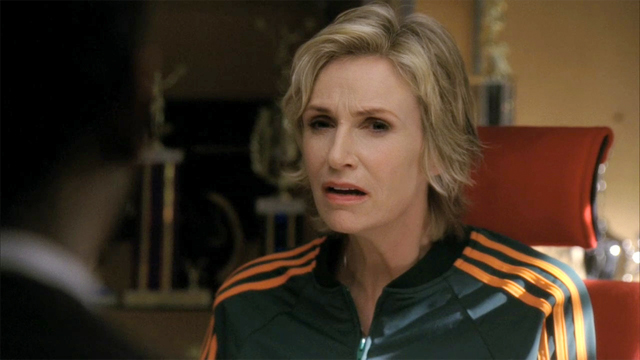
Find me a woman over 50 on TV who is not a playing a supporting role as someone’s grandma. Go on, I’ll wait. You can’t even name five of them, right? Can you name a woman over 50 who is playing a series regular straight butchy woman on TV? Nope, you sure can’t, because Jane Lynch as Sue Sylvester is the only one. Sue defied stereotypes left and right. The butchy straight thing. The fact that her main focus was her career and not a family. The way she never apologized for being a HBIC who wanted more power. Sometimes she was the villain and sometimes she was the hero, but she was one of the only characters on the show who was always entertaining. (Maybe the only other character on the show besides Santana.) We’re only ever going to see one Sue Sylvester on our TVs. Weirdly enough, I think I’ll miss her most of all. You could tell her story for a hundred years and never run out of hijinks.
4. They told a teenage lesbian coming out story that hadn’t been told before
By Riese
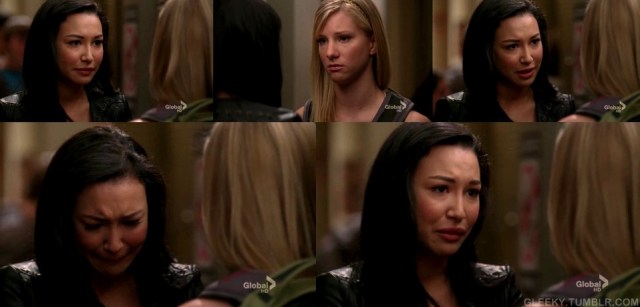
When I first heard that Santana was a lesbian (before watching the episode myself, ’cause I didn’t have a television), I thought it might be a joke, because you know, Santana is the slutty one who sleeps with all the boys! But then I realized, all at once: but I was the slutty one who slept with all the boys. Santana’s story was the first teenage lesbian on television who felt like me, even though I was in my early 20s by the time I figured it out. I didn’t figure it out gradually and then suddenly or even just gradually, I figured it out all at once, like Santana did, and then all the discordant elements of my life came together and finally made sense. I never would’ve predicted lesbiansim was my final clue, but there it was, and it felt right but it also felt so scary. I’d thought making out with girls was just an extension of aforementioned sluthood and couldn’t possibly mean I wanted to like, date one. “I made out with a mannequin,” Santana tells Holly when trying to parse out who she likes. “I even had a sex dream about a shrub that was in the shape of a person.” Boys greased the wheels of her social ambition, and her need for popularity and power was so strong that it disguised itself as desire for the boys themselves and not what they represented. Was Santana always written that way? I don’t know. But sometimes life feels like that: one storyline, and then another.
5. Dave Karofsky and Spencer Postmodern Gay Were Jocks
by Heather Hogan
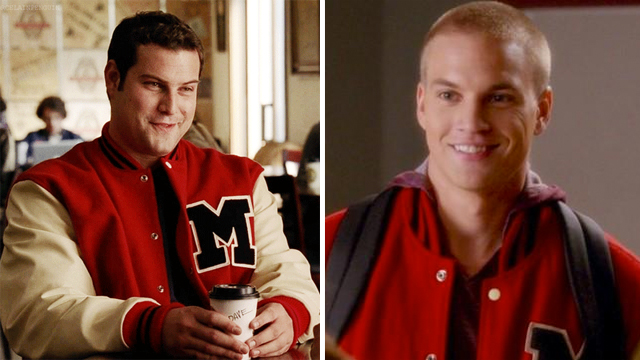
Karofsky’s suicide storyline was exploitive and terrible, and Spencer’s self-satisfied meta commentary about the glory of Glee was insufferable and masturbatory, but there’s no denying that having two openly gay football players on a TV show is a big damn deal. The blow up after Michael Sam kissed his boyfriend on ESPN after he was drafted by the St. Louis Rams, just last year, proves that. And Sam still hasn’t found a permanent spot on a roster. Sports culture (especially football culture) is still rife with homophobia. And sports culture (especially football culture) is a driving force in nearly every aspect of American life, from the economy to what’s on TV to Top 40 song lyrics. So it had to Get Better on Glee before it even had a shot of Getting Better in the NFL.
6. Kurt and Blaine were endgame
by Heather Hogan
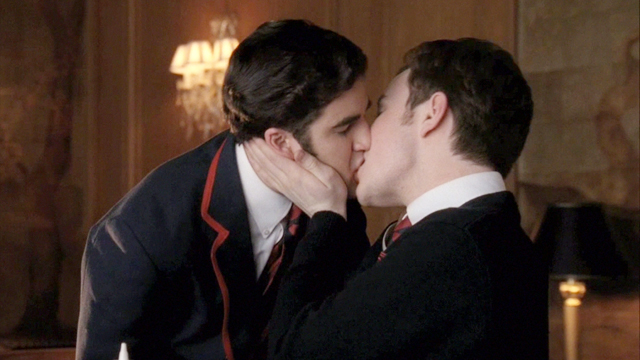
There has been a very weird, very gross dichotomy between the way gay men and gay women are represented on TV for a long time. Gay men are more prominent, but up until very recently, they were never seen in sexual (or even overtly romantic) situations, especially on network television. Gay women, however, have been hyper sexualized and used as ratings bait for over a decade. But Kurt and Blaine blew up that double standard. Their first time having sex was as important as Rachel and Finn’s first time having sex. They kissed with their mouths open and also with their tongues ON FOX. They made out at school, in cars, in their bedroom, in hotel rooms, in fake elevators, and at prom. They shared some of the most romantic moments and duets on the whole entire show. And they got married, in the end, at a double gay wedding. Kurt and Blaine really did change things for every other broadcast network. Just a couple of gay teenagers in love.
7. They Had a Teenage Trans Girl of Color Who Was A Part of the Main Cast
by Mey Rude
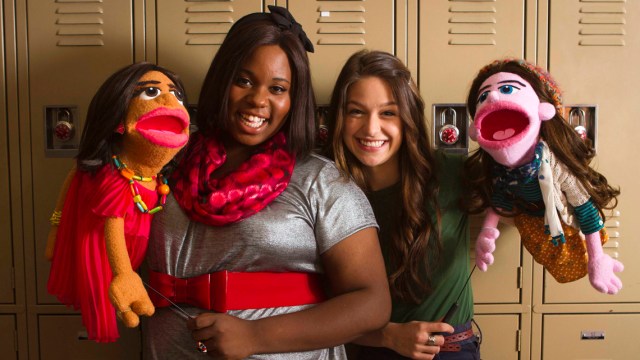
Okay, yes, there was a lot about how the show treated Unique that was a straight up mess, but there was also something revolutionary about her. Let’s think just for a minute about how amazing it actually was to have a character like Unique Adams on Network Television. She was a black, plus size, supremely talented and fashionable trans girl who had a group of friends who actually cared about her and, when they weren’t being completely ignorant, tried to support her in her transition. We’d never seen a character like her before and we haven’t really seen anyone like her since. As a fat, trans woman of color, seeing Unique do things like be the best singer at Nationals, or have fun at a sleepover with the other girls in “Glease” or have her fellow New New Directioners step up and say that they’ll walk home from school with her so that she doesn’t have to be afraid anymore regularly brought me to tears. Despite all the show did wrong with Unique, they did make is so that trans women of color like myself had someone on TV we could look to and see ourselves reflected back.
8. Kurt and Burt’s Father-Son Relationship Was Brilliant
by Heather Hogan

Kurt and Burt’s father/son dynamic was the thing that hooked me on Glee in the beginning. Burt Hummel was the voice of middle America. He was not some teenage thespian. He was a blue collar widower who went from taking away his son’s car if he acted gay to officiating his son’s gay wedding, and in between all that, he became the best father any gay TV character could ask for. He gave Kurt love advice, life advice, and forced him to listen to safe sex advice. He drove Kurt to the airport so he could follow his dreams to New York, even though he knew that meant Kurt would never really come home again. Burt was Kurt’s safe space and the springboard for his dreams. And, as soon as Kurt came out to him for real, he was Kurt’s greatest defender when he found himself being bullied for being gay. Glee fans can’t agree on anything, really, except for the fact that Burt Hummel is the best ever. He probably changed as many minds as Kurt did, because like Burt, a lot of Americans didn’t know any gay people until Kurt came out. And when the mechanic from Lima, Ohio was okay with it, middle America felt okay with it too.
9. Lesbian fandom seized its power
by Heather Hogan

Riese and I have written about this a lot in our recaps this season, but it should be repeated (forever, really): Way back during “Sectionals,” the 13th episode of season one, Brittany said a thing that wasn’t meant to stick. It was meant as a joke: “Sex isn’t dating; if it were, Santana and I would be dating.” If she’d said that at any other time in history, maybe it would have just floated on by. But she said it during a perfect storm of Prop. 8 backlash, a horrific pandemic of gay teenagers committing suicide after being bullied, and the rise of Twitter. Suddenly, lesbian fandom had a way to talk to the people who made TV, and there was a justified fire inside them, and they were not backing down.
Santana resonated with so many lesbians who had never seen themselves represented on TV before (see above) and Brittany resonated with so many queer women who didn’t feel the need to bag-and-tag their sexual orientation (see below). And, of course, falling in love with your best friend is a lesbian rite of passage. For six seasons, lesbian fandom demanded to be heard, to be represented fairly, to be able to watch see story that was meant to be, right on their TVs. Every milestone of Brittany and Santana’s relationship happened because of lesbian fandom. From their first (actual, real) kiss to their wedding. The Lesbian Blogger Community didn’t quit when the show’s creators chided them on social media, mocked them inside the show, or tried very hard to ignore them. When I write the book on lesbian fandom, I will point to Brittana fans as the ones who changed the world.







